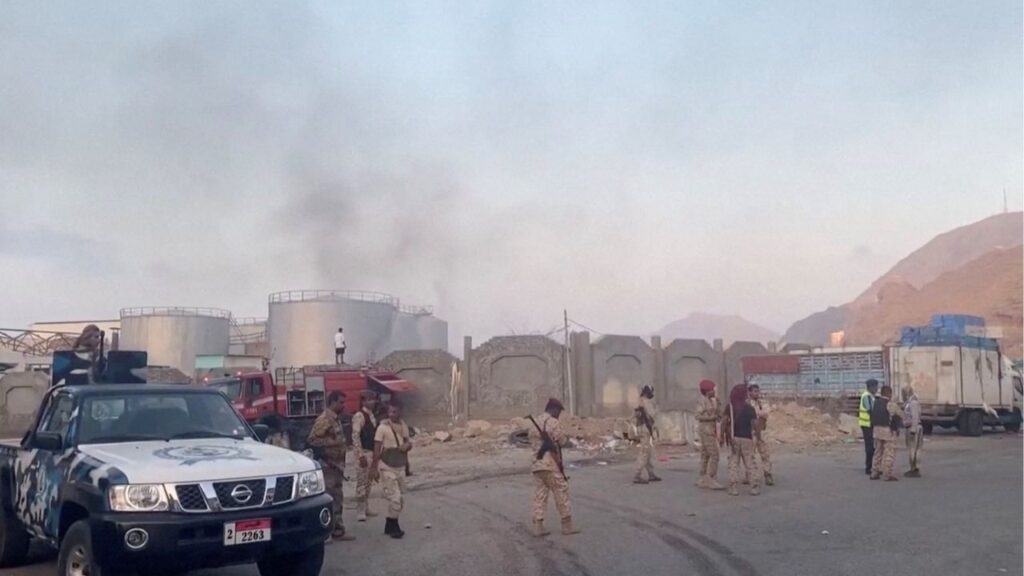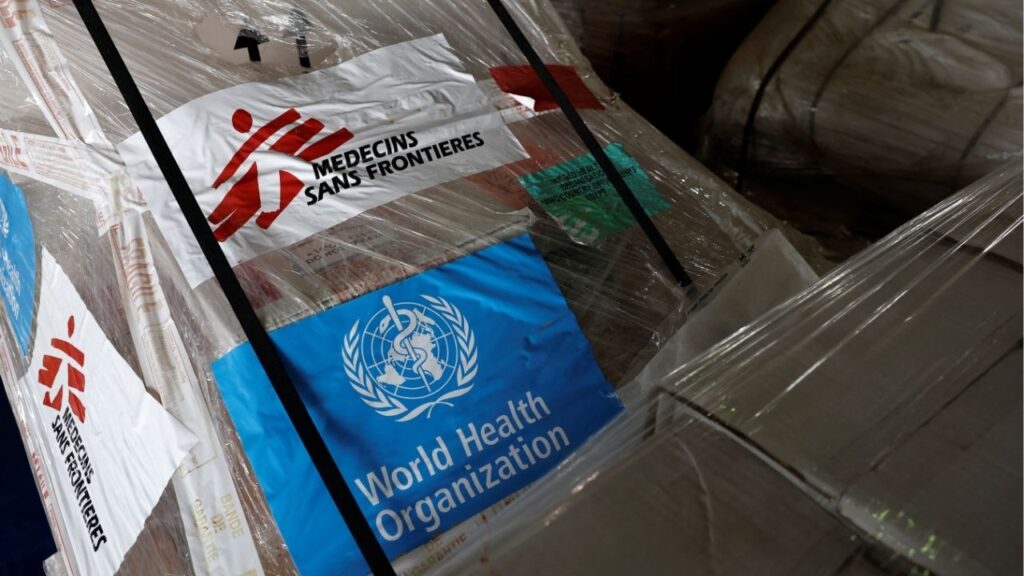Susan C. Beachy contributed research.
c.2025 The New York Times Company

|
Getting your Trinity Audio player ready...
|
The road has inspired rock bands and novelists. It’s sold Oldsmobiles, Chryslers and Mustangs. It has promised freedom, opportunity for introspection, or the perfect selfie. And in a feat of engineering, it clings for hundreds of miles to the edge of the continent.
The Pacific Coast Highway is among the most famous drives in the world.
But it keeps breaking.
Since building began on the first parts of the highway more than a century ago, sections of the route, which runs more than 650 miles from south of Los Angeles to Northern California, have been closed, over and over again.
In some places, chunks of the road have slipped into the ocean. In others, more than 1 million tons of earth have barreled onto the highway, slicing it to pieces. Bridges have failed. Rainstorms have flooded the road with mud. Residents have been left marooned. Tourists have been shut out.
Recently, consecutive landslides in Big Sur, a 90-mile region along the Central Coast, have closed parts of the road for two years, four months and counting. And in January, the Palisades fire, which burned thousands of homes, shuttered an 11-mile stretch of the highway connecting the Los Angeles area with the beachside city of Malibu, California.
That stretch reopened on Friday, but there is no timeline for reopening the road in Big Sur.
The California Department of Transportation, known as Caltrans, said that the state had spent more than $370 million on fixing the highway after extreme weather events in the past seven years. Prolonged closures in 2017 cost businesses along the route more than $500 million, according to the state’s tourism agency, Visit California.
New York has skyscrapers. Arizona has a canyon. Mississippi has a river. California has a coast — and one major highway to see it from. Building the road on unstable terrain took ingenuity. Fixing it in a world being rocked by climate change may take even more.
In early May, a four-day trip of about 600 miles along much of the highway from Los Angeles to San Francisco (passing through a burn zone and circumventing a landslide) revealed residents struggling with the closures and contemplating the future of the route.
It is officially called California State Route 1, but is commonly referred to as the Pacific Coast Highway, or Highway 1, and was built bit by bit, beginning in the early 1900s. In 1964, it was merged into a single highway.
The road winds through steep granite bluffs and yawns open in salt-worn beach towns where trailers with American flags stake their place in the sand. Workers poke sticks into the earth to measure the rate at which it is moving. Tractor-trailers haul car-size boulders up the narrow pass.
One of the drivers, Juan Ramirez, each day carries two or three very large rocks from near Fresno, more than 150 miles inland, to the coast.
“It’s a long way,” he said. “Four hours this way, and then, four hours out.”
The boulders are used to build a retaining wall intended to hold back the force of the Pacific Ocean — one small part of the effort to keep the highway open. It’s a herculean task. Increasingly, it is becoming Sisyphean.

A long, perfectly-peeling point break makes Malibu Lagoon State Beach, directly off the highway, among the most well-known surfing spots in the world.
But on a morning in early May, just a few silhouettes bobbed in the water. To the east, the highway, normally four lanes along this stretch, was down to two lanes that were open only to residents, workers and emergency services. Beach parking lots had become depots for bulldozers. Traffic crawled past charred debris.
Helene Henderson, the founder of Malibu Farm, a restaurant and cafe on the pier, had no idea construction was planned that day on her doorstep. “Because a fire is not enough,” she said. The restaurant, ordinarily buzzing even on a weekday, was empty, and Henderson said that 100 staff members had no working hours.
Other businesses had laid off their workers. Some couldn’t make rent. Yvonne DeLaRosa, the owner of 99 High Tide, a cannabis dispensary, said she had drained her life savings to cover her costs.
In the wake of the fire, the closure of the highway, which is the spine of the city, had wrought a second economic disaster, said Barbara Bruderlin, CEO of the Malibu Pacific Palisades Chamber of Commerce.
“It’s strangling all the businesses,” she said. “One by one, they’re beginning to close.” Though the road is reopening, many may continue to struggle.
Jefferson Wagner, a stuntman and former mayor of Malibu, said that sales at his surf shop, Zuma Jay Surfboards, were down nearly 50%.
His store, just outside a road closure checkpoint, had become a makeshift post office for businesses beyond it, with packages piling up on the floor.
“Without this highway,” Wagner said, “this town is lost.”
In the southern part of Big Sur, the road narrows to a two-lane ribbon that is the only major route in or out. On the one side is a dizzying cliff. On the other is a precipitous plunge into the ocean down jagged rocks.
Residents expect isolation, and ensure they have food and gas for the times they become trapped. For weeks in 2023, landslides to both the north and south cut off a 20-mile stretch of the coast.
By the time officials cleared the highway, another cascade with earth to fill hundreds of Olympic-size swimming pools had buried another stretch.
The back-to-back slides have devastated many of the community’s small inns and stores and are testing even the most hardened residents.
“It’s been closed, closed, and closed, and closed, and closed,” said Surge Withrow, 52, a general contractor. It used to take him 10 minutes to drop his children at the school bus. Now it takes him at least an hour each way.
There are more than 1,500 active slide areas in Big Sur, which is caught between major fault lines, and where the ranges are made of a fractured jumble of rocks. When rain saturates these slopes, they become even more likely to slide.
But in the early 20th century, officials, convinced the coast was of military value, dared to carve a highway into 100 miles of the erratic terrain.
Boats hauled in supplies. Convict laborers used dynamite to blast through granite and marble. Construction of this section was completed in 1937. Since then, at least dozens of slides, as well as fires and floods, have caused this stretch of highway to break.
The most recent, Regent’s Slide (some are so infamous they have names), shuttered the highway for nearly 7 miles on Feb. 9, 2024.
There is no fix in sight.
The slide moves more than a foot a day, according to Caltrans. The site is so perilous that workers operate remote-controlled bulldozers. They drill giant steel dowels into the earth to try to stabilize it. Pairs of spotters with binoculars watch for any hints of approaching catastrophe.
Along other stretches of the highway troubled by slides and erosion, Caltrans has built tunnels, installed retaining walls, or moved the road back. But some experts question whether these measures will be enough to climate-proof the road in the long term.
Gary Griggs, a professor of earth and planetary sciences at the University of California, Santa Cruz, who has advised on a major repair to the route, said that he doubted the highway would ever again be open in its entirety for an extended period.
“Attaining stability is impossible,” he said.

Ordinarily, it takes about 20 minutes to drive from the southern coast of Big Sur to the Esalen Institute, a New Age retreat on the northern part of the coast. Going around the slide takes almost four hours.
“It’s a lot longer of a journey,” said Nathaniel Wise, a 35-year-old photographer and social media influencer. “But I like how quiet it is.” His camper and Starlink satellite were parked on the bend of an inland road wrapping around a canyon.
Big Sur has long lured writers, monks and others seeking transcendence — as well as millions of tourists a year.
In the 1950s, writer Henry Miller, who lived there for nearly two decades, was already lamenting the crowds that threatened to turn Big Sur into a “bonanza.”
Even with the closure, the northern part of the coast, which remains easily accessible from San Francisco, continues to grapple with the longer-term impact of overtourism.
Visitors park illegally to take selfies in front of the Bixby Bridge, mythologized in music, TV shows and films, as well as by the macOS Big Sur wallpaper.
“We came here because we’re big Apple fans,” said Natt Phenjati, 36, a tourist from Thailand.
There has always been a complex relationship between Big Sur and its visitors — and the highway that gets them in and out.
“It is a constant project to keep this road open,” said Magnus Torén, director of the Henry Miller Memorial Library in Big Sur.
At some distant time, it might become untenable, he added. But perhaps there was a silver lining: Without people, the coast could be preserved.
“I never thought of this before,” he added, “but how wonderful that would be.”
This article originally appeared in The New York Times.
Susan C. Beachy contributed research.
c.2025 The New York Times Company



